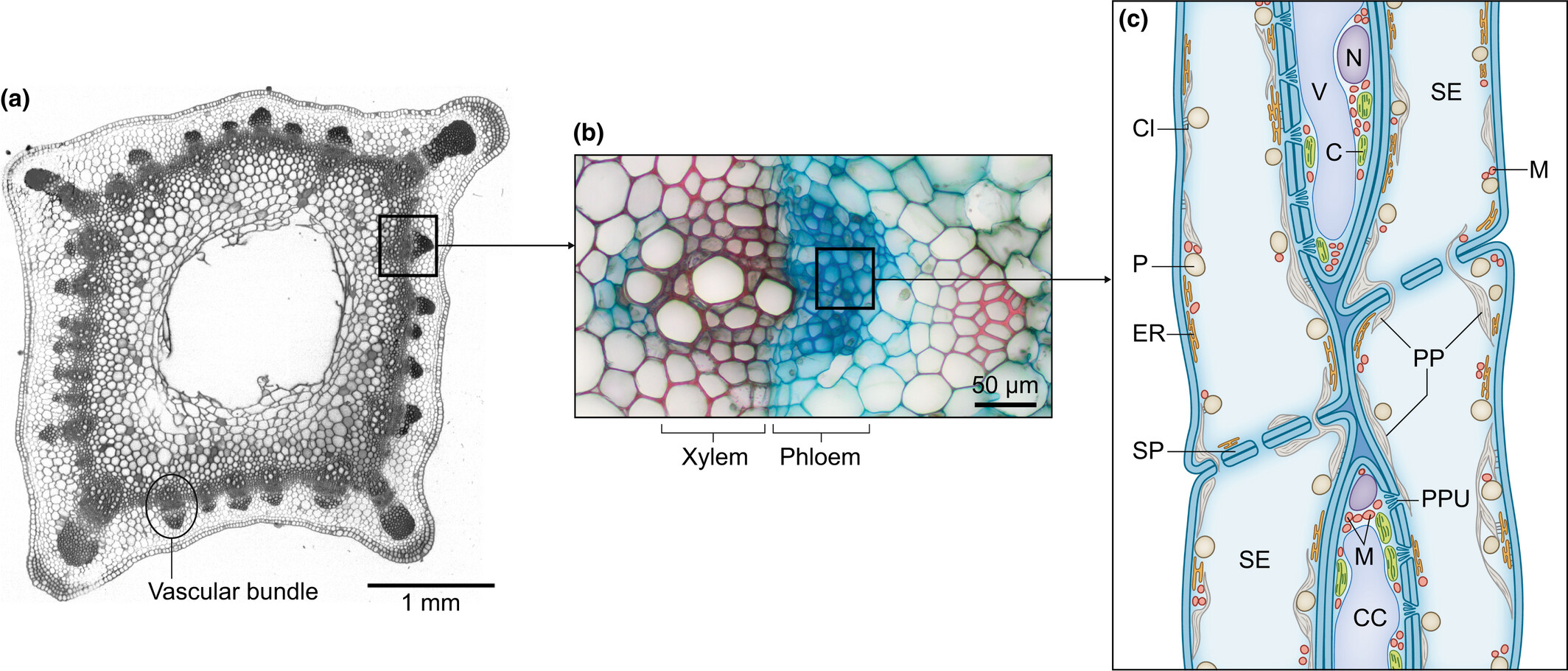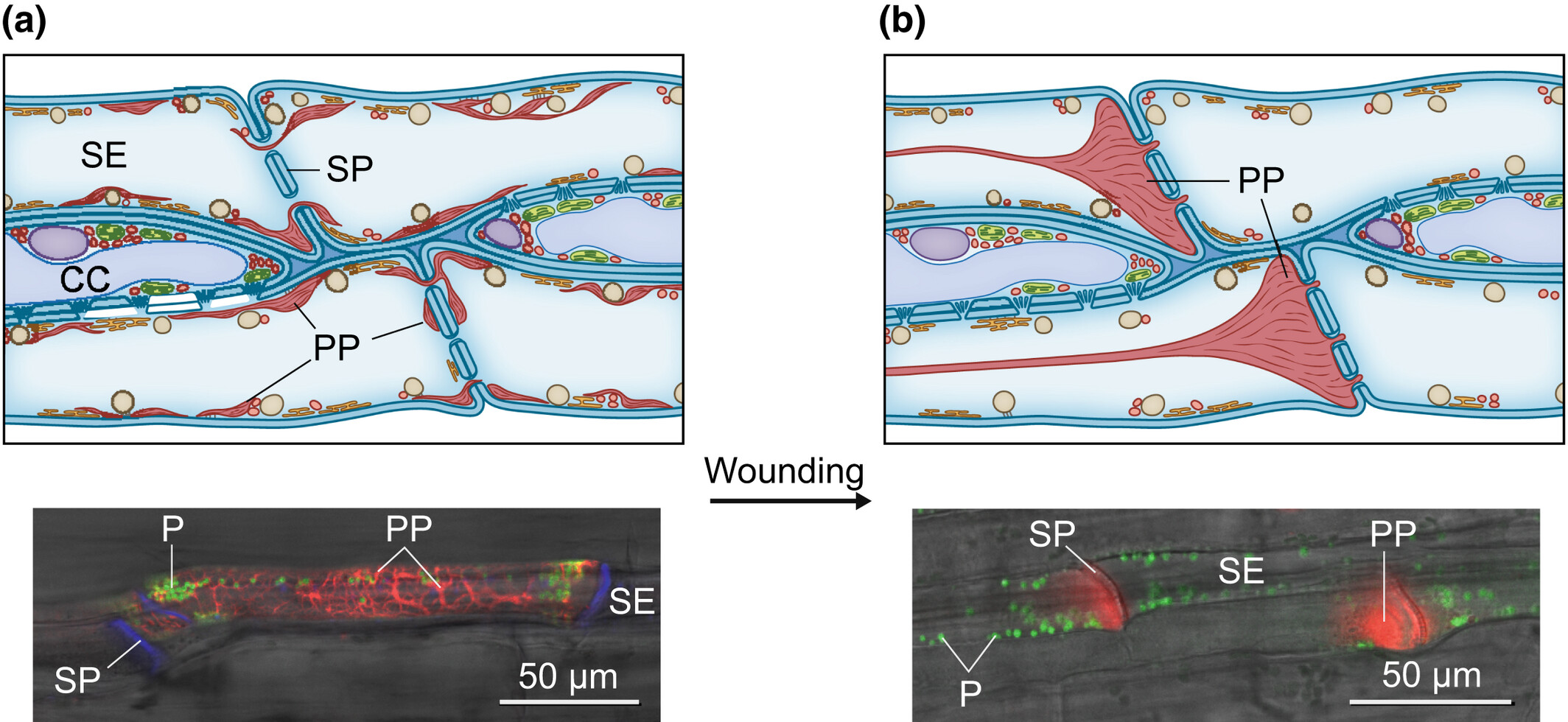P-proteins: The natural protection system for the vascular tissue of plants


Phloem: The central transport system for nutrients and signals
The function of the phloem extends beyond transport; the living tubular sieve elements distribute sugars and nutrients and facilitate the systemic transmission of information about stress conditions, mechanical injuries, and pathogen-induced defense reactions. However, this sensitive transport system is vulnerable to damage and infection. Insect bites, environmental stress, and mechanical impact can result in the loss of valuable phloem sap, enabling pathogens, such as bacteria, viruses, and fungi, to penetrate the system. These pathogens can then spread unhindered through the phloem, posing a lasting threat to plant health and yield, which has significant consequences for agriculture and food production.
Protective mechanism of P proteins
To protect themselves against such attacks, plants have specialized protein structures called P proteins (structural phloem proteins). When intact, they form a widely branched network along the membranes of the sieve elements. When damaged, they react quickly: the network dissolves and the P proteins – mobilized by the phloem stream – are deposited specifically on the sieve plates. There they act like a natural plug, sealing the damaged area and thus preventing the loss of phloem sap and the entry of pathogens.
However, the protective mechanism of P proteins likely extends beyond physical sealing. Studies suggest that P proteins are involved in long-distance signal transmission in the phloem and may coordinate immune responses throughout the plant. P proteins may influence the transmission of signals, such as calcium ions, reactive oxygen species (ROS), and peptides, which serve as early stress and defense signals. These signals can activate the expression of defense genes in distant parts of the plant, preparing it for potential dangers - an effective early warning system against pathogens.
Research and application
We are working intensively to decipher the molecular mechanisms behind the function of P proteins in the phloem. Using state-of-the-art live cell fluorescence microscopy methods, we observe in real time how P proteins behave when the phloem is damaged and how they are integrated into complex signaling pathways. We also use sensor-based systems to track dynamic changes in calcium and ROS levels, which are essential components of stress signal transduction.
We utilize genetic tools such as CRISPR/Cas9 to specifically analyze the role of P-proteins in pathogen-induced stress responses. Our research has shown that improved regulation of P-proteins correlates with increased resistance to pests, particularly in important crops such as potatoes and tobacco. These findings open up industrial applications for the development of robust crops that are more resistant to biotic stress.
The targeted use and optimization of plant defense mechanisms, such as P-proteins, are valuable contributions to sustainable agriculture. These mechanisms help reduce the use of chemical pesticides, secure yields, and strengthen plants' ability to adapt to climate change.
 Fraunhofer Institute for Molecular Biology and Applied Ecology IME
Fraunhofer Institute for Molecular Biology and Applied Ecology IME

